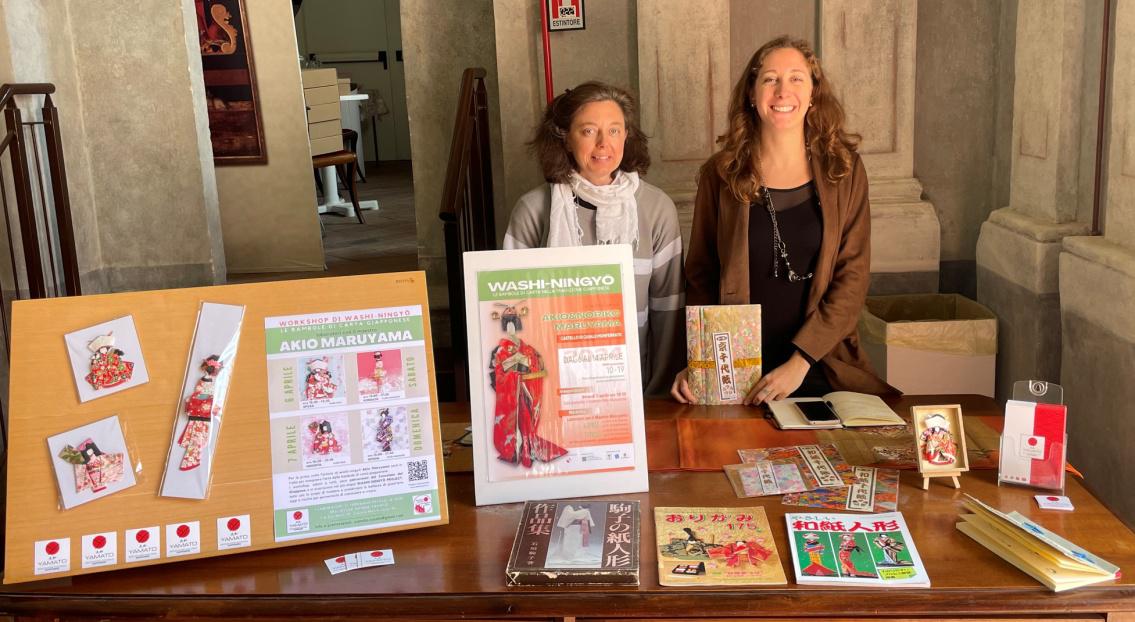The exhibition “Washi-Ningyō” was inaugurated on Friday 5 April at the chapel of the Casale Monferrato Castle. Paper dolls in the Japanese tradition”, organized by the Yamato Association with the patronage of the Consulate General of Japan in Milan, curated by Juliet in Zena. More than 30 dolls, Washi-Ningyō, created by the master Akio Maruyama and Noriko Maruyama, his mother, master of this art, who accompanies him since he was a child along the training path which in turn led him to be master and spokesperson of this tradition that risks being forgotten.
Doing the honors are Alessia and Cristina who invite the visitor to dedicate all the time necessary to observe and appreciate these fascinating paper dolls, intertwined with threads of history and culture, which enchant with their grace and delicacy. The journey begins with the Tanzaku, strips of paper decorated with two-dimensional dolls, and continues by representing scenes of common life: children learning to write, a woman busy making a dress, the mother hugging her son, the maiko dancing with a fan, the samurai… Each Washi-Ningyō is made with great attention to detail, the hairstyles are refined and full of details and the clothes and kimonos, thanks to the decorations and soft folds of the paper, give the impression that they were created with fine fabrics.
The term Washi-Ningyō is formed from the words ningyō which in Japanese means “human form” and washi (wa: Japanese, shi: paper), is a type of paper still produced today in a traditional way using vegetable fibres; there can be different types, among these the most used for making dolls are yūzen paper, with bright colors that do not fade and chirimen paper with ripples that make it similar to fabrics. The tradition of creating paper dolls dates back to the Edo period (1603-1868). Washi paper was initially used by nobles to package gifts, but we had to reach the Edo period to see the first three-dimensional dolls created, when Buddhist monks and artisans they used washi to shape sacred and figurative forms. As time passed, however, they lost this role, becoming a popular art form appreciated by all social classes.
This exhibition offers a journey into ancient Japan that continues to inspire and enchant generations of people around the world.
In an age of rapid change, these fascinating creations remind us of the importance of preserving the roots of our past to illuminate the path to the future.
